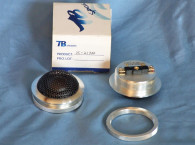

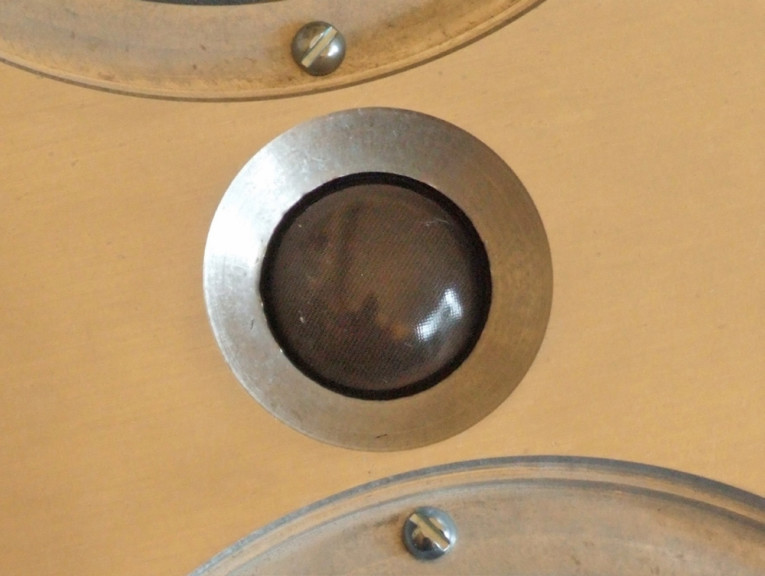
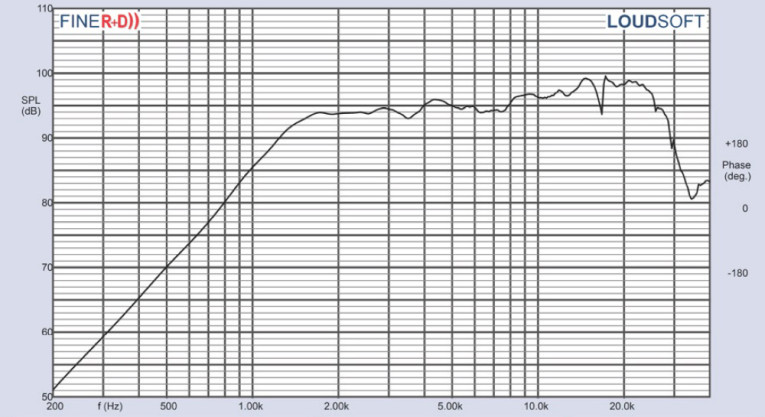
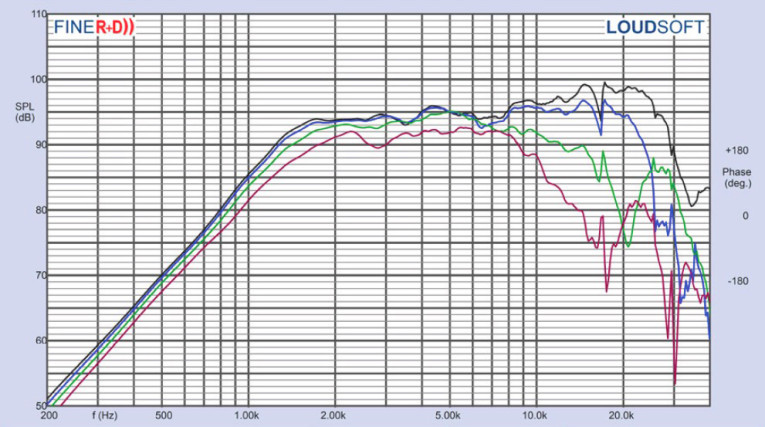
While the SD28 is listed in the Super tweeter category on the Eminence website, the suggested applications are for “car audio, ATV, RV, or any other application where space is limited.” In terms of features, the SD28 was provided without a mounting flange, as can be seen in Photo 1. Other features include a 4 Ω impedance for a 92.5 dB sensitivity, a 1” silk dome with response out to 20 kHz, and a self-shielding neodymium motor.
I began analysis of the SD28 silk dome by performing a 300-point LMS impedance curve, which is depicted in Figure 1. The impedance resonance for this tweeter occurs at 1.5 kHz (factory spec is 1.5 kHz). With a 2.96 Ω DCR (Re), the minimum impedance for this tweeter measures 3.23 Ω at 4.9 kHz.
Since the SD28 does not come with a faceplate for mounting, I had to come up with a fixture in order to make the various SPL measurements. Fortunately, I still had one of the CNC’d aluminum faceplates that was created for a THX Ultra2 certification project I did a number of years ago (I have done a lot of these over the years!) and was able to create a fixture to mount the SD28 (see Photo 2).
Next, I mounted the Eminence SD28 and the aluminum mounting flange in an enclosure with a 13” × 6” baffle area and measured the on- and off-axis SPL. The FINE R+D analyzer and 46BE 1/4” microphone were set up to measure the 200 Hz to 40 kHz frequency response, again at 2 V/0.5 m normalized to 2.83 V/1 m. Data was then taken with sweeps at 0°, 15°, 30°, and 45°. Figure 2 shows the SD28’s on-axis response. Using my old THX faceplate, the SD28 has a slightly rising response that measured ±2 dB from 1700 Hz to 12.5 kHz, with no major breakup modes apparent, and a response out to 25 kHz.
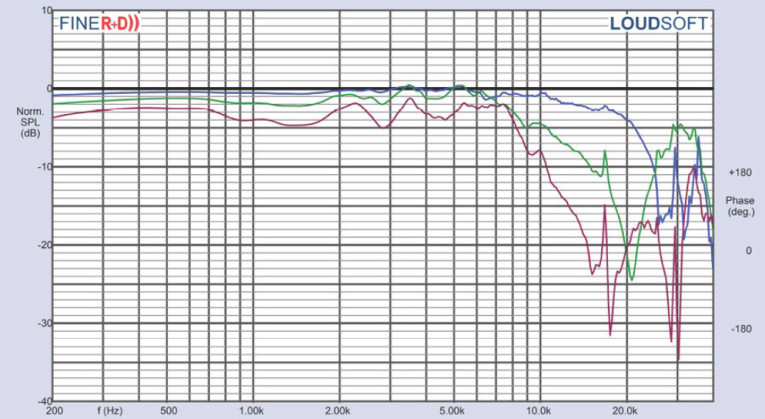


Figure 3 depicts the on- and off-axis frequency response in the horizontal plane, with the off-axis curves normalized to the on-axis response in Figure 4. Figure 5 shows the CLIO 180° polar plot (measured in 10° increments). The two-sample SPL comparison is given in Figure 6, indicating the two samples were matched to within 1 to 2 dB throughout its operating range.
I again set up the Listen SoundCheck analyzer with the SCM microphone and AudioConnect USB interface/mic preamp. With the SPL set to 94 dB/1 m (2.34 V) using the built in pink noise generator and SLM utilities, I relocated the 1/4” SCM microphone to 10 cm from the faceplate of the SD28, and ran the distortion curves depicted in Figure 7 (red curve = second harmonic, blue curve = third harmonic).


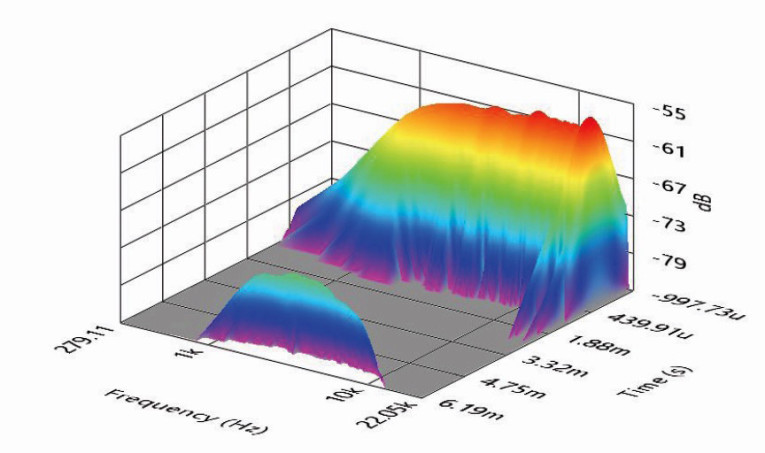
For the final measurement on the Eminence silk dome tweeter, I performed an impulse measurement, and then imported this file into the Listen SoundMap software, windowed out the room reflections, and created the CSD plot shown in Figure 8 and the STFT shown in Figure 9.
As seen from the objective data, Eminence displayed its usual professional engineering chops with the development of the competently designed SD28 soft dome tweeter. For more information, visit the Eminence website at www.eminence.com. VC
This article was originally published in Voice Coil, January 2019





